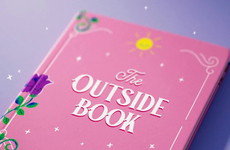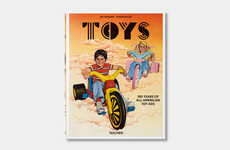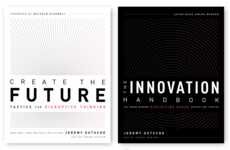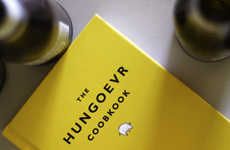
These Book Culture Ads Show Fiction Getting to an Idea Before Reality
Laura McQuarrie — May 31, 2014 — Marketing
References: bookculture & adsoftheworld
When it comes to some of the big world events like landing on the moon, venturing deep under the sea or conducting seriously sci-fi experiments, this series of Book Culture advertisements wordlessly communicates that "Imagination got there first."
The series puts classic book covers like Frankenstein, Twenty Thousand Leagues Under the Sea and George Orwell's Animal Farm on a timeline representative of a significant amount of time between ideas first being told in the form of a fictional story and eventually becoming reality.
The ads for New York City-based Book Culture were created by the Y&R agency and prove the benefits of daring to dream big, because you never know just what's going to be possible in the future—but if you're a reader, you might just get a taste of what's to come.
The series puts classic book covers like Frankenstein, Twenty Thousand Leagues Under the Sea and George Orwell's Animal Farm on a timeline representative of a significant amount of time between ideas first being told in the form of a fictional story and eventually becoming reality.
The ads for New York City-based Book Culture were created by the Y&R agency and prove the benefits of daring to dream big, because you never know just what's going to be possible in the future—but if you're a reader, you might just get a taste of what's to come.
Trend Themes
1. Imagination-reality Gap - Industries can innovate by bridging the gap between imaginative fiction and future reality through technology and R&D.
2. Literary Advertising - Opportunities exist for publishers to create similar book ads that explore inventive and imaginary scenarios that lead to future reality.
3. Nostalgic Marketing - A trend that showcases how nostalgia can inspire consumers to envision a better future by inspiring their imagination and creativity.
Industry Implications
1. Publishing - Publishers can leverage technology to create an immersive experience for readers, blending imagination and reality with VR and AR.
2. Advertising - Marketers can use nostalgia as a strategy to engage the audience in their imagination and appeal to their emotions to inspire innovation.
3. Technology - Innovative tech firms can explore new potential use cases for emerging technologies like VR, AR, and AI in bridging the gap between imagination and reality.
1.9
Score
Popularity
Activity
Freshness























